Rules
Define criteria to automatically add monitors to specific parts of your database and schema.
Rules is a powerful new feature, enabling automated, dynamic monitoring of your database and schema. With Rules, you can define criteria that automatically add monitors to specific parts of your database and schema when conditions are met—and remove them when those conditions no longer apply. This ensures your monitoring stays relevant and adaptive as your data evolves.
Rules allows you to scale your coverage efficiently without the need for manually managing monitors, reducing stale monitors and improving signal-to-noise ratio. By proactively ensuring visibility into critical data assets, your team can focus on addressing real issues rather than constantly adjusting monitoring configurations.
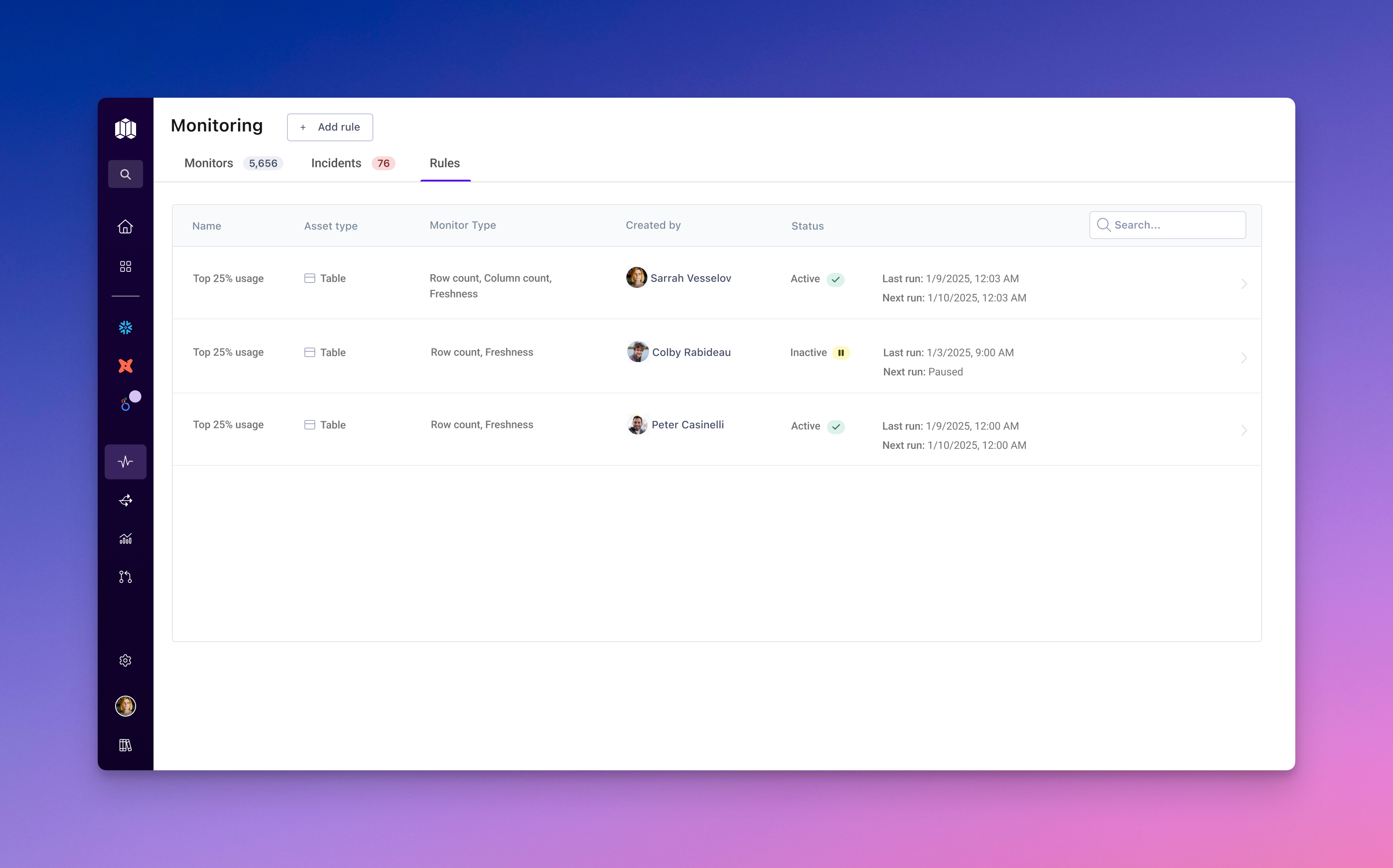
Creating a Rule
There are three places where a rule can be created:
- The Rules tab located under the main Monitoring page
- The Rules tab located under a specific connection
- During the setup of a monitor
The process is nearly identical between the three places. When setting up a monitor, you will see an option to convert your selected criteria to a rule. Selecting this option will bring up the rules setup screen and you will follow the same process described below.
Select a location for your rule
In this example, we are showing setup starting from the main monitoring tab.
Start by selecting the location (connection) where your rule will run. If you're adding a rule from a connection, this field will be pre-filled. After selecting a location, choose an asset type—available options will vary based on the selected connection.

Define criteria for your rule
Once you've selected a location and asset type, you can use filter criteria to create and further refine your rule. We've organized filters by type as follows:
Metric Value: A quantifiable measure. ( Row count, Column count, Freshness, Bytes.)
Monitoring: Relation to a monitor. (No monitor, Has a failing monitor)
Properties: Has a specific property. (With name, With score, Is one of, Is table, Is view, Tagged with)
Lineage: Where data flows to and from. (Upstream of, Downstream of)
Relationships: The way things are connected to one another. (In connection, In database, In schema, Contains column)
Data Insights: Patterns and correlations of data. (With usage, Queried by user)
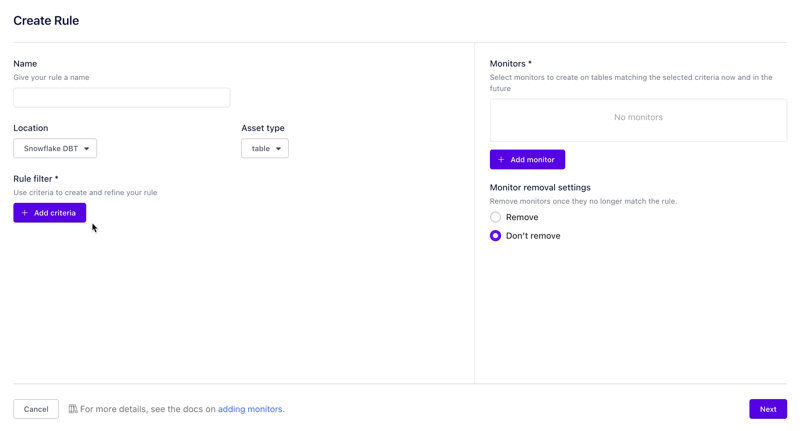
As you refine your criteria, you'll see the number of matching assets update in real time. If no assets currently match, that’s okay—your rule will still run and automatically add monitors as assets meet the criteria. You will have the opportunity to review any matching assets in the next step.
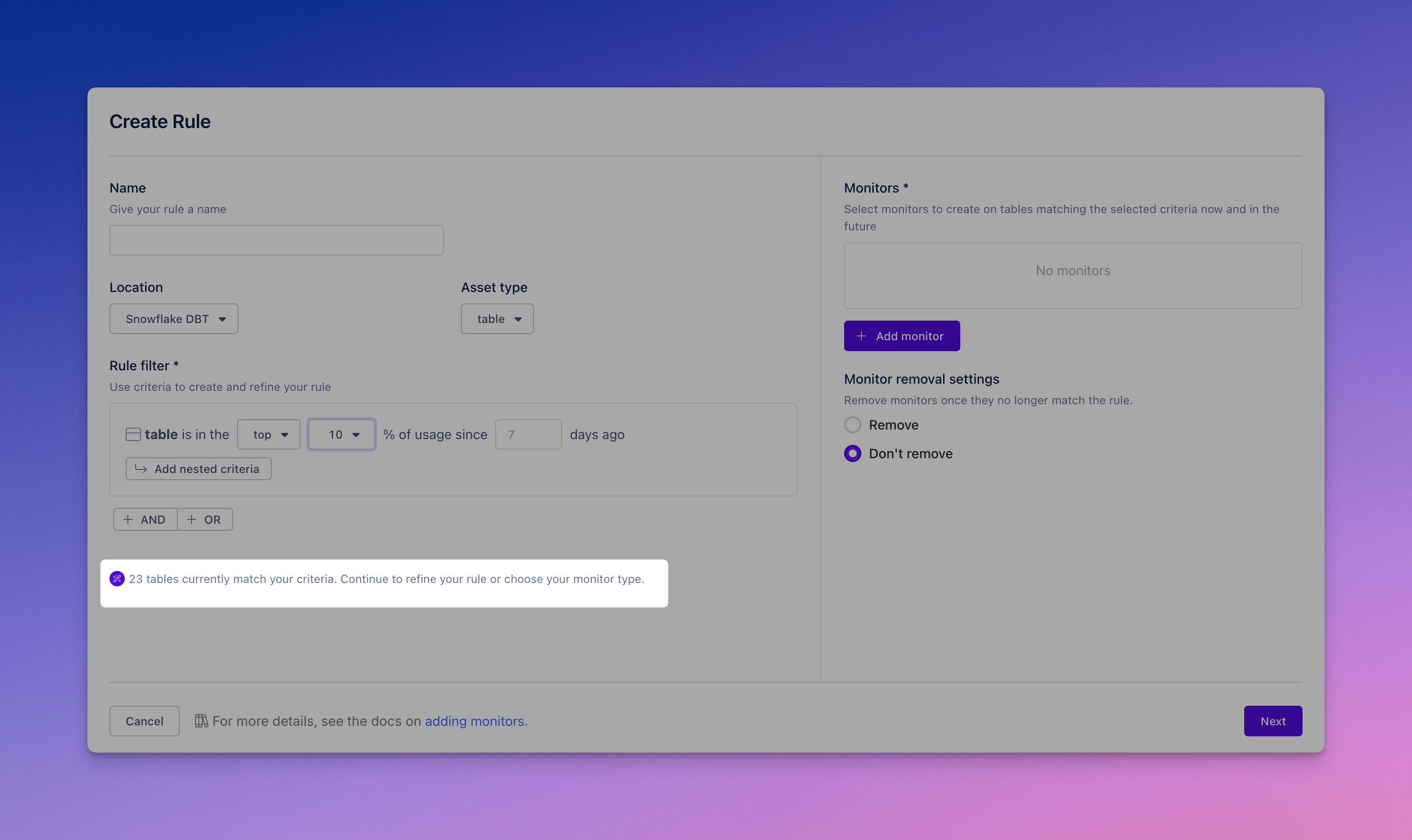
Choose monitors
With your criteria set, you can select one or more monitors to create on assets matching the selected criteria now and in the future. Your choice of monitor type will change depending on the asset type you set up for your rule.
Click the settings icon to configure each monitor. These settings will apply to all monitors created by the rule, both now and in the future.
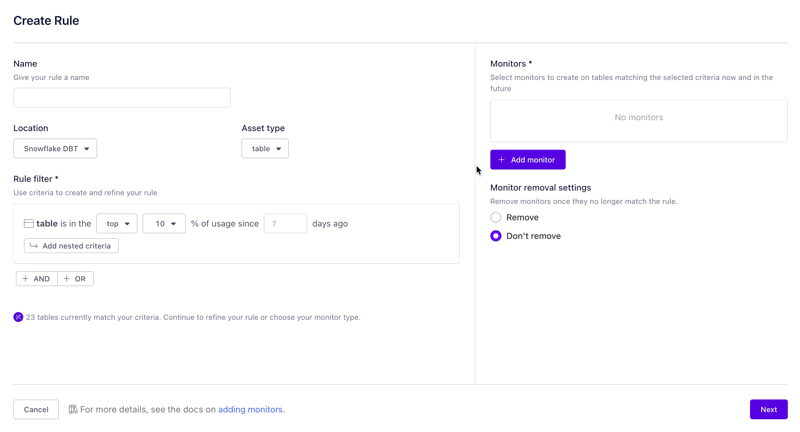
Monitor removal settings
To help you stay aligned with changes in your data, you can choose to have monitors automatically removed when an asset no longer meets the criteria.
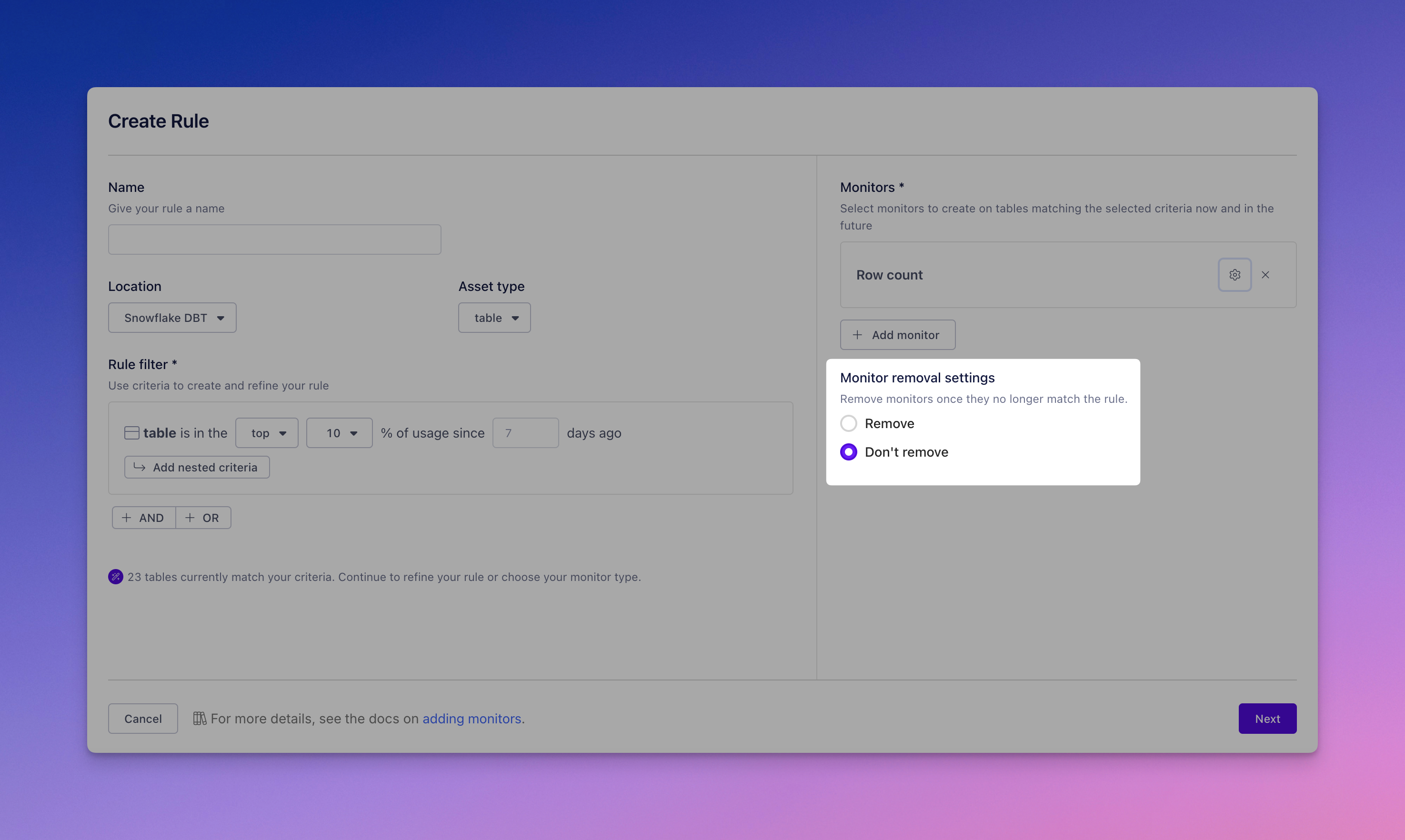
Don't forget to give your rule a name! You won't be able to move on to the next step until you do so.
Preview and save rule
Identified assets
In this step, you will have to opportunity to review any assets that match your criteria. There may be none, that's ok.
Monitor Coverage
For each asset, you will see a monitor key showing you whether that asset is already covered by that type of monitor.
- Assets already covered will show a green checkmark. Rules will not override/replace existing monitors.
- Assets that do not have a specific monitor type will show a blue plus symbol, meaning that monitor type will be added as a part of this rule.
- Assets that are 100% covered will show a covered badge.
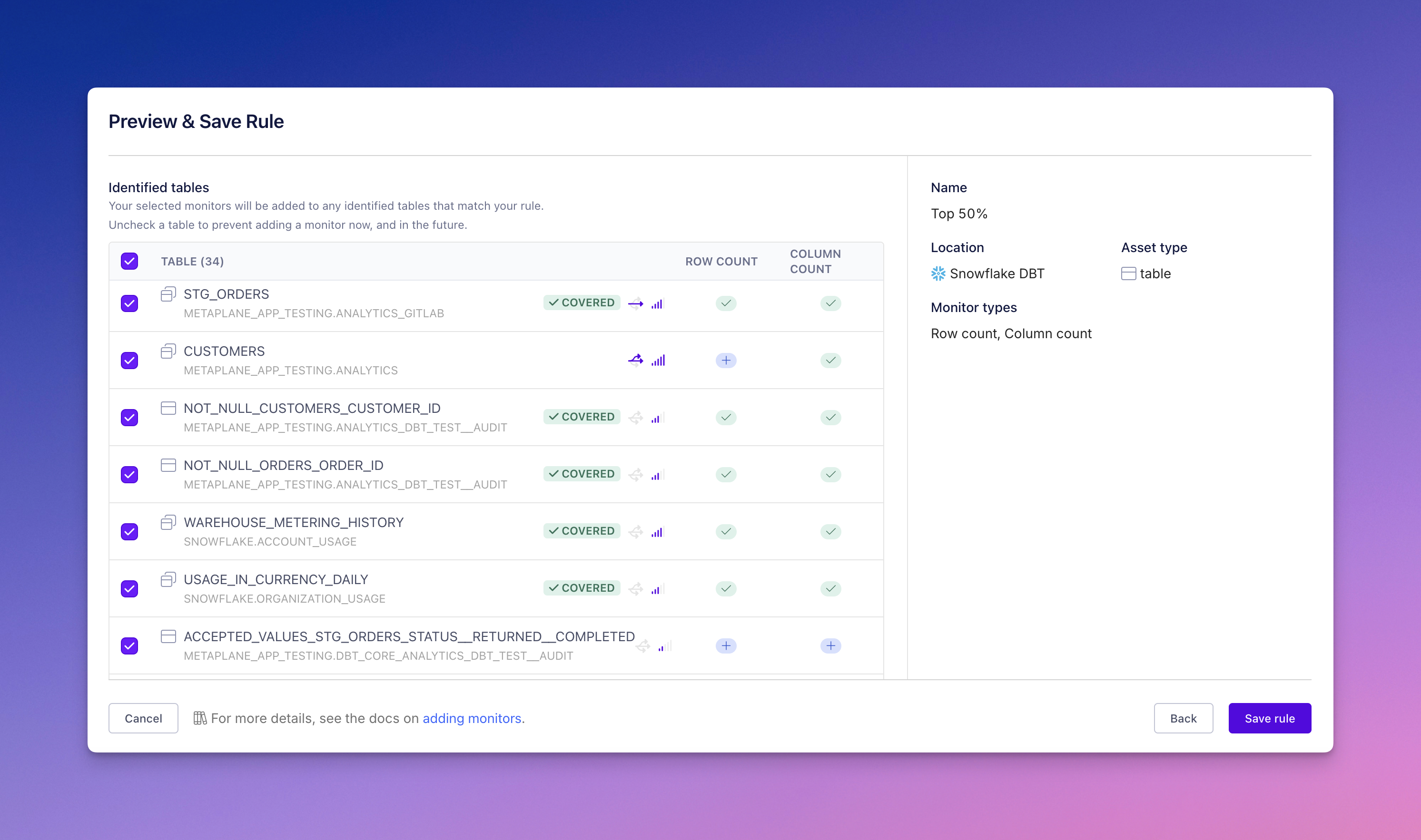
Excluding assets
To exclude an asset from your rule, simply uncheck the checkbox at the beginning of the row. Excluded assets won’t be affected by the rule now or in future runs—no monitors will be added or removed. Excluded assets will be marked with an "Excluded" badge.
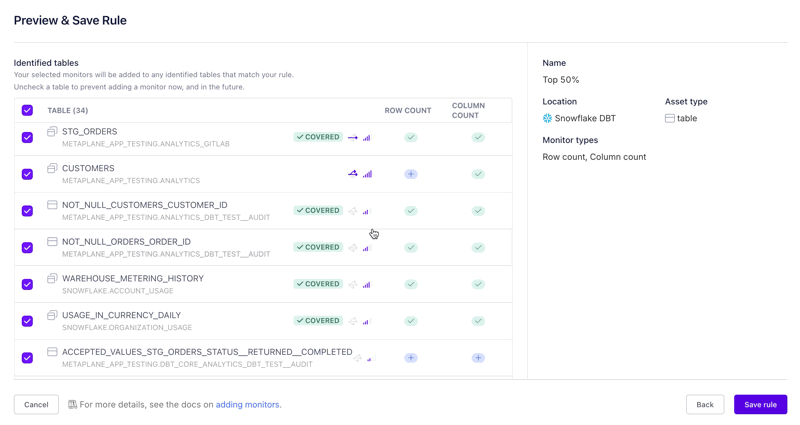
Once your rule is set up, you can come back and see which assets have been excluded. To include them again, use the edit feature and recheck the checkbox.
Viewing your rule
Rules can be viewed by going to the rules tab under the main monitoring page or in the rules tab of a specific connection.
Monitor Tab
Monitors that have been added by your rule can be viewed on the monitors tab. Click on any monitor to view details.
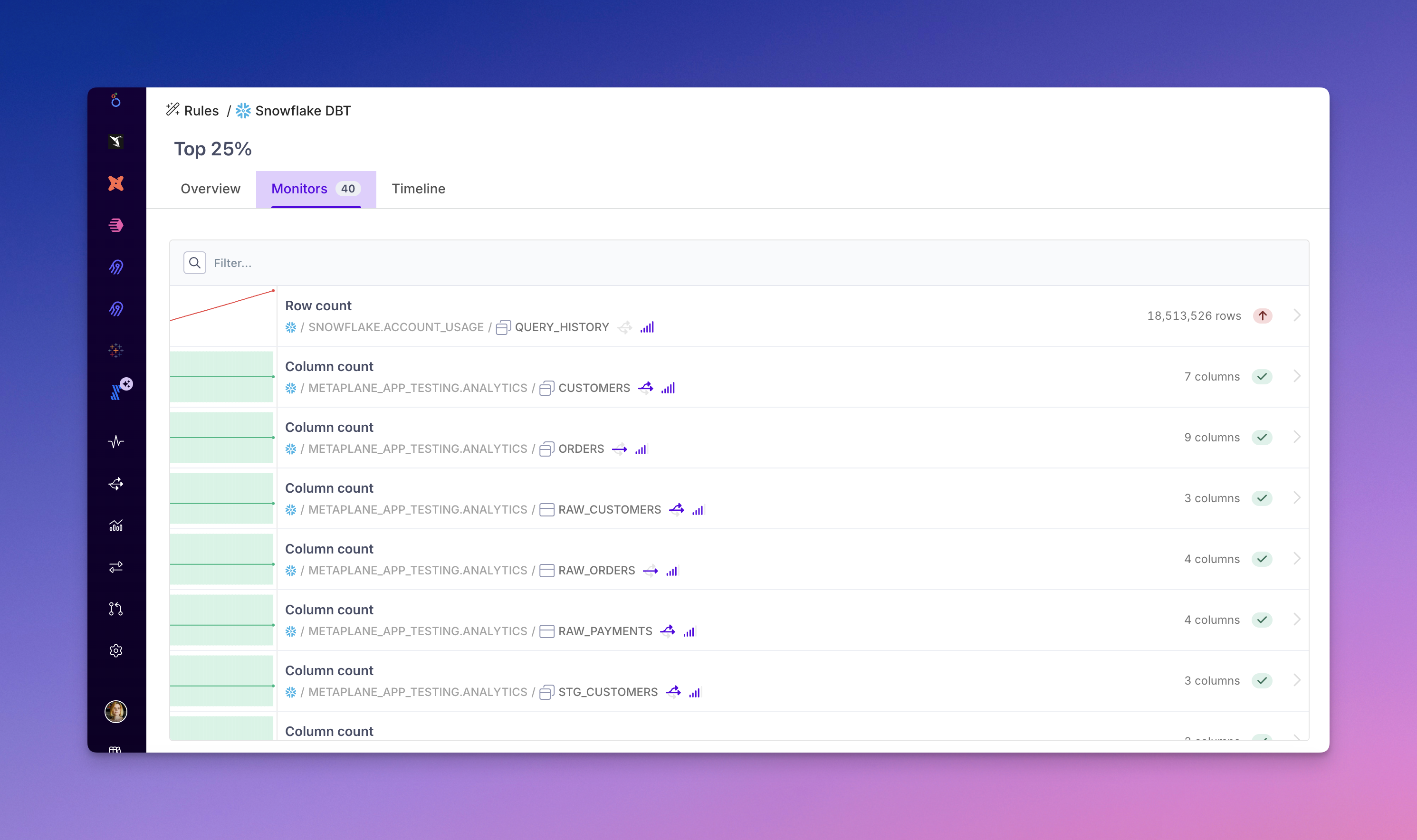
Timeline
The timeline tab details on when a rule has run and any actions associated with the rule. Actions include additions and removals of monitors based upon your settings. Each monitor contains a handy link, allowing you to dig deeper as needed.
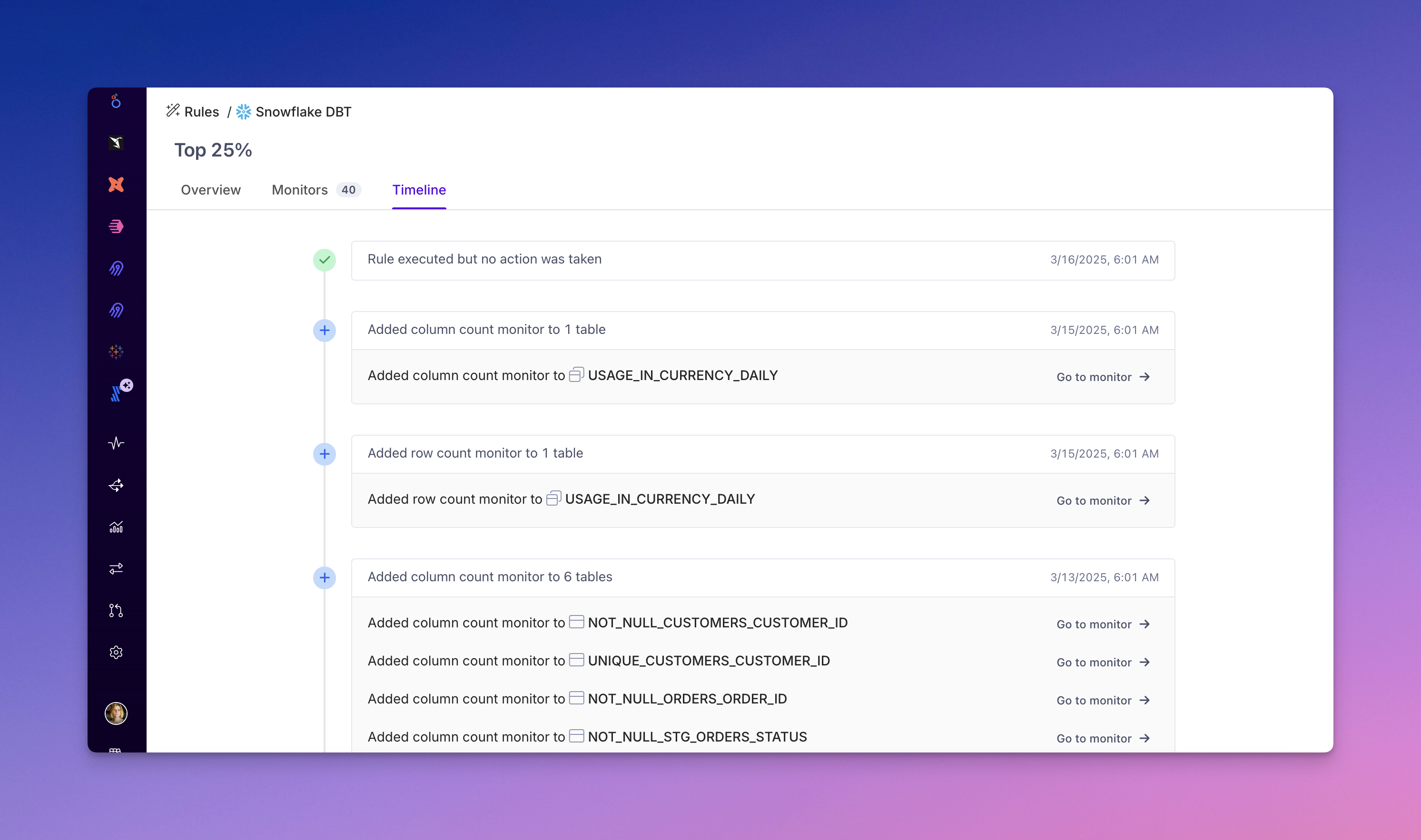
Pausing a rule
Pausing a rule can be useful in several scenarios, including:
Temporary Schema Changes – If your schema is undergoing temporary modifications (e.g., migrations, renaming, or restructuring), pausing a rule prevents unnecessary monitor additions or removals during the transition.
Investigating Unexpected Behavior – If a rule is applying monitors in an unintended way, pausing it allows time for troubleshooting without further changes being made.
Seasonal or Project-Based Monitoring – For assets that require monitoring only during specific time periods (e.g., quarter-end reporting, holiday sales tracking), pausing a rule helps maintain relevant monitoring without manually recreating it later.
Compliance & Governance Adjustments – If monitoring policies are being reviewed or updated, pausing a rule can prevent premature changes while new criteria are finalized.
Paused rules will show as inactive in both the list and individual views. Paused rules may be set to active at any time.
Editing a rule
To edit a rule, select it from the list to open it. From here, choose edit.
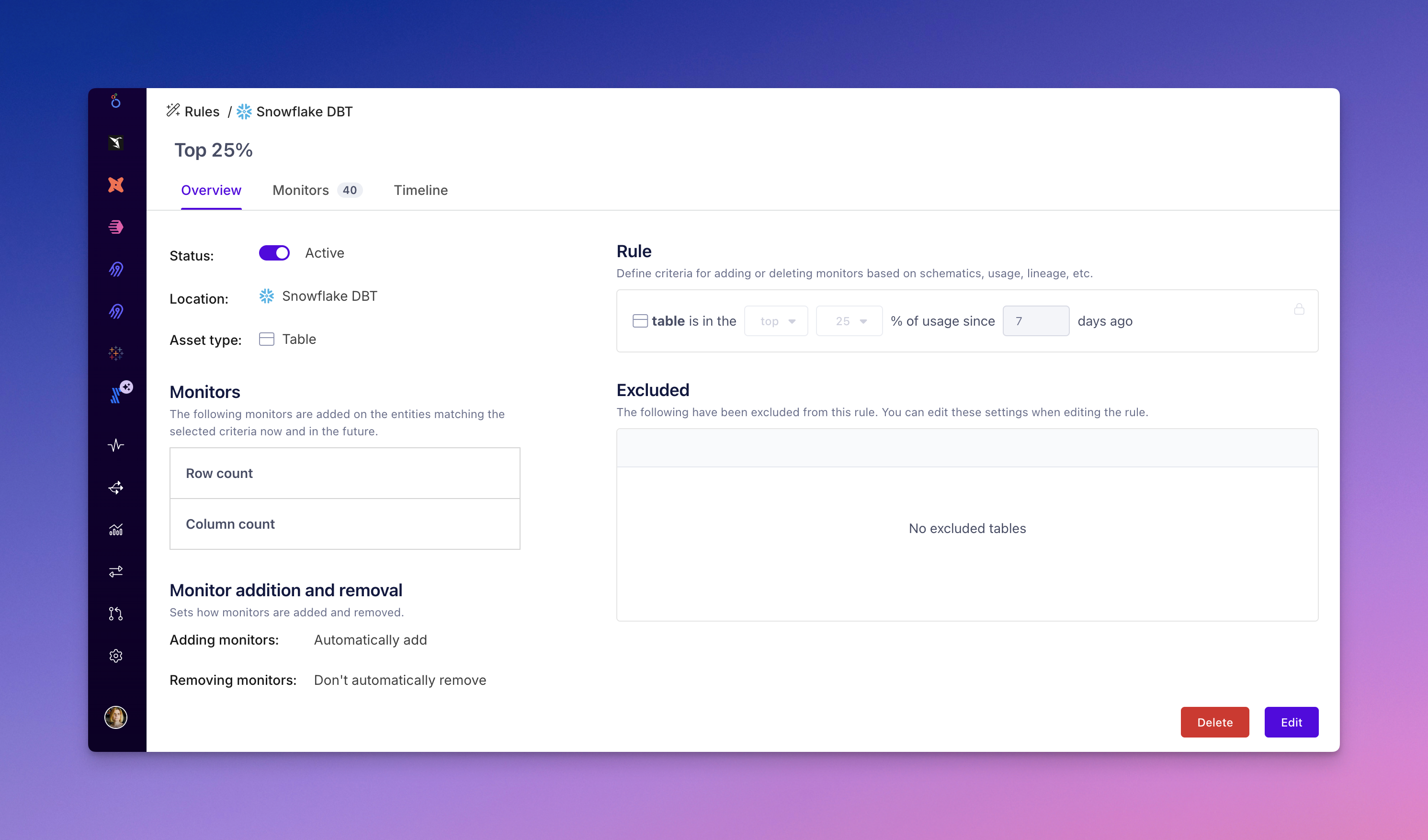
When editing an existing rule, there are some things to keep in mind.
Updating monitor configurations will not affect existing monitors
For example, if you have a rule that applies a row count monitor to tables in the top 10% of usage, and you edit the monitor's run frequency from hourly to daily, the monitors already applied by the rule will not be updated. They will continue to run hourly.
Updating the filter criteria may result in removal of monitors, but only if removal is enabled
For example, if you have a rule that applies a row count monitor to tables in the top 50% of usage and you update the criteria to tables in the top 25%, some tables that previously matched may no longer meet the new criteria. If you've enabled monitor removal for unmatched assets, these monitors will be removed when you save the changes.
Updated 7 months ago